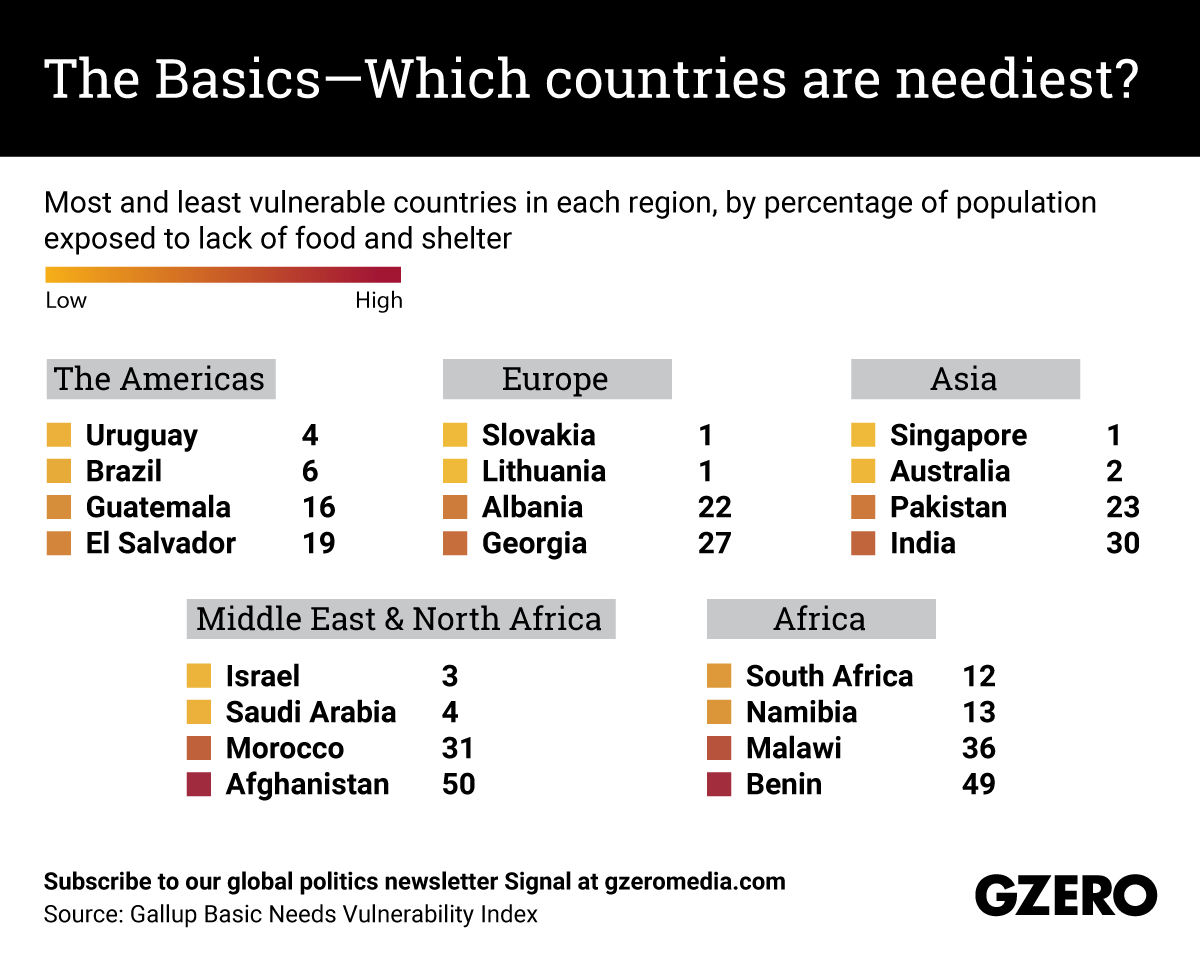June 17, 2020
Even before the COVID-19 pandemic plunged millions into joblessness, huge numbers of people around world were in danger of losing access to food and shelter. Throughout 2019, Gallup conducted surveys in 142 countries and found that 750 million people — one out of every seven adults in the world — fell into the "High Vulnerability" category, meaning they struggled to afford food or rent and lacked sufficient support from family or friends. Gallup has since published a new Basic Needs Index, which assesses vulnerability to major shocks — like a pandemic. Here's a look at some of the most and least vulnerable countries in each region, according to Gallup's findings.
More For You
Behind every scam lies a story — and within every story, a critical lesson. Anatomy of a Scam, takes you inside the world of modern fraud — from investment schemes to impersonation and romance scams. You'll meet the investigators tracking down bad actors and learn about the innovative work being done across the payments ecosystem to protect consumers and businesses alike. Watch the first episode of Mastercard's five-part documentary, 'Anatomy of a Scam,' here.
Most Popular
Think you know what's going on around the world? Here's your chance to prove it.
© 2025 GZERO Media. All Rights Reserved | A Eurasia Group media company.
